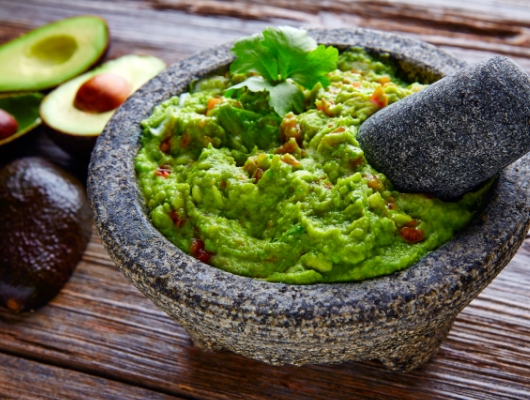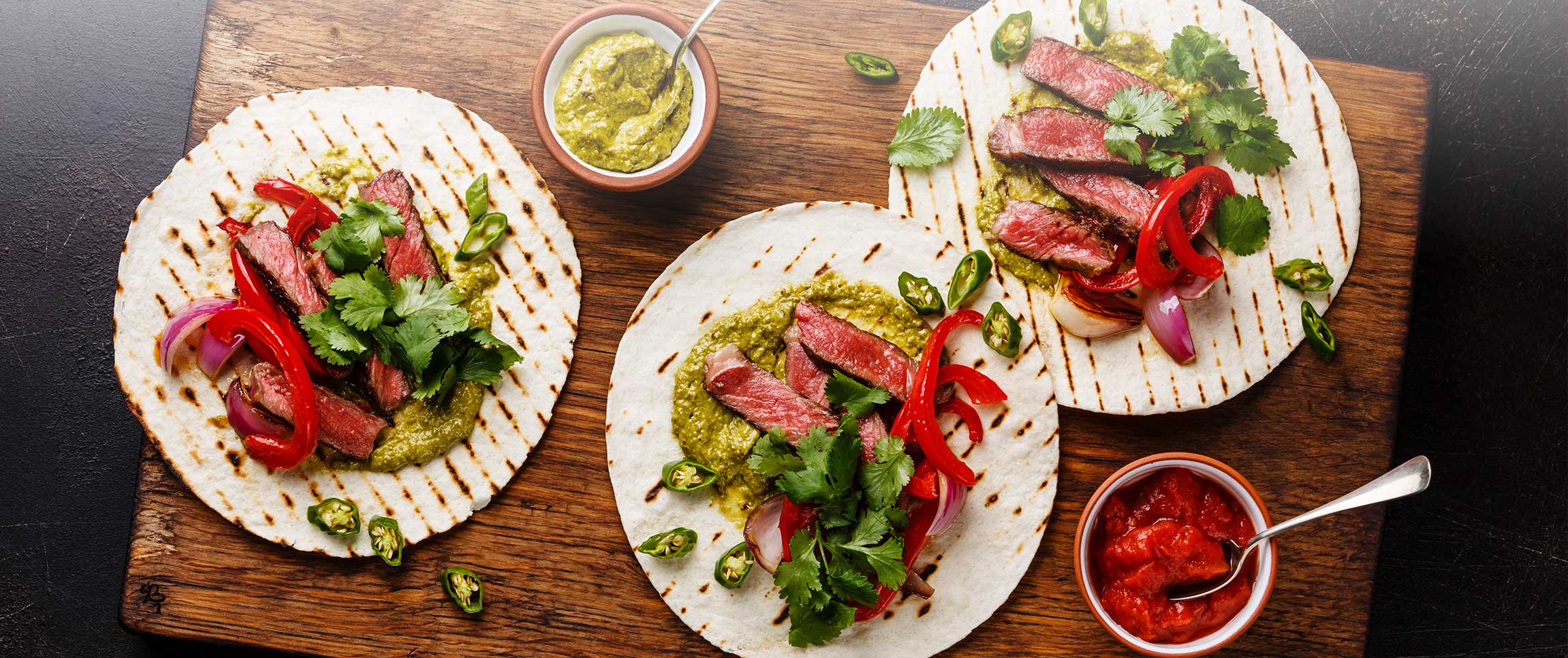Salsa is the Spanish word for “sauce”, and it has also come to mean the same thing in English. However, this iconic condiment, which can consist of vegetables, fruit, herbs, spices, and even grains, and which can range from mild and tangy to searing hot, is much more than a simple topping.
There are numerous categories of salsa, some uncooked (salsa cruda) and some cooked.
- Salsa verde is “green salsa”, which is typically made from pureed tomatillos, green chilies, and cilantro.
- Salsa roja or “red salsa” usually includes cooked red tomatoes, onions, and chili peppers.
- Pico de gallo is a popular form of uncooked salsa made from lime juice and coarsely chopped raw ingredients including tomatoes, onions, and cilantro leaves.
Salsa is a prime example of the significant evolution of food trends over the past two decades. In that time, salsa has leapt into prominence not only in supermarkets and restaurants, but in ordinary cuisine. Salsa has long since surpassed ketchup as the number one condiment in the U.S., and demand only continues to grow. This increase in popularity is due in part to the various immigrant groups that continue to flow into the United States, combined with a heightened awareness of the culinary and health benefits of salsa. Salsas are usually low in fat, and the vegetables, fruits, and spices which comprise them are healthy and fresh. Additionally, enhancing flavor with spices and herbs rather than fats is an appealing technique in today’s health-conscious food arena. From a culinary standpoint, salsa can add zip and spark to many dishes, yet it is incredibly simple to prepare and has endless variations.
Flavors
Unlike in other sauces, salsa's flavors are not meant to blend completely; instead, each one should complement the others while retaining its individuality. Composing a salsa involves juggling a multitude of tastes, colors, and textures for a balanced result where each ingredient can stand out on its own without overpowering the others. Depending on the tastes desired, different ingredients can be incorporated to create a balanced set of flavors.
- The strong spiciness of serrano peppers can create a bright bite of heat, while chipotle peppers can add a subtle, smoky quality.
- Black pepper, on the other hand, should be used with caution, as its particular brand of heat may clash with that of chilies.
- Herbs such as cilantro and coriander provide sharp notes, while vinegar and citrus juice are added to brighten the other flavors.
- Avocado salsas are smooth and rich, mango or papaya salsas are sweet and tangy, and salsa made with aguardiente (Columbian brandy) and berries is a fruity, aromatic sauce that works wonderfully as a dessert topping.
Looking for something a little off the beaten path? Roast tomatoes and chilies for a deeper salsa flavor, or char and sear them completely to create the smoky-sweet salsa negra. More unique salsas can be made using carrots, cabbages, or other vegetables as a base, or even grains like farro and quinoa.
Fruit salsas shouldn’t be limited to tropical fruits like mango or pineapple; a watermelon and blueberry salsa is a cool and refreshing summer treat, while a sweet pear or apple salsa complements savory dishes. Prickly pear cactus, pomegranate, even candied bacon—the sky is the limit when choosing ingredients for salsa combinations. The only universal rule seems to be to use the freshest ingredients whenever possible.
Preparation and Storage
In general, allow salsas to sit at room temperature for around twenty minutes to an hour; this rest period allows the flavors of the salsa to combine and mingle. That said, the longer the salsa sits, the thinner it becomes, as the salt draws moisture from the tomatoes. Using the proper tomatoes and removing the seeds and pulp will help prevent the salsa from becoming too watery, but as a general rule of thumb, salsa is best when served shortly after it is prepared.
Most salsas can be refrigerated for a few days, although they should generally be brought to room temperature before serving. However, salsas made with raw ingredients do not keep as well or for as long; fruit salsas can be particularly delicate and some need to be served almost immediately. If preparing a salsa ahead of time, it may be advisable to cook all or some of the components, or to choose ingredients with a longer fridge life.
Serving Suggestions
Salsas need not be limited to the realm of tortilla chips, either; salads, meat entrées, and even desserts can benefit from their presence. A salsa with raw and coarsely chopped ingredients can expand the texture range of a dish, while a salsa that has been cooked to a thinner consistency and more unified flavor can be take the place of a sauce or glaze. Regardless of type, a good salsa shines at the forefront of a meal and will complement companion dishes with its bursts of color and flavor.



